Spectroheliograph type images in Hydrogen alpha
The following images were taken with a LUNT solar telescope, with a narrow filter in the Hydrogen alpha line, on March 30, 2013. This filter captures light from the chromosphere, which is higher than 500 km above the photosphere. Spicules, prominences, active regions and sunspots are visible. The pictures were taken with an exposure time between 1/8 and 1/40 sec with ISO 800, and using ocular projection to increase the amount of detail (using all the pixels in the camera). I used a Canon 450D camera.
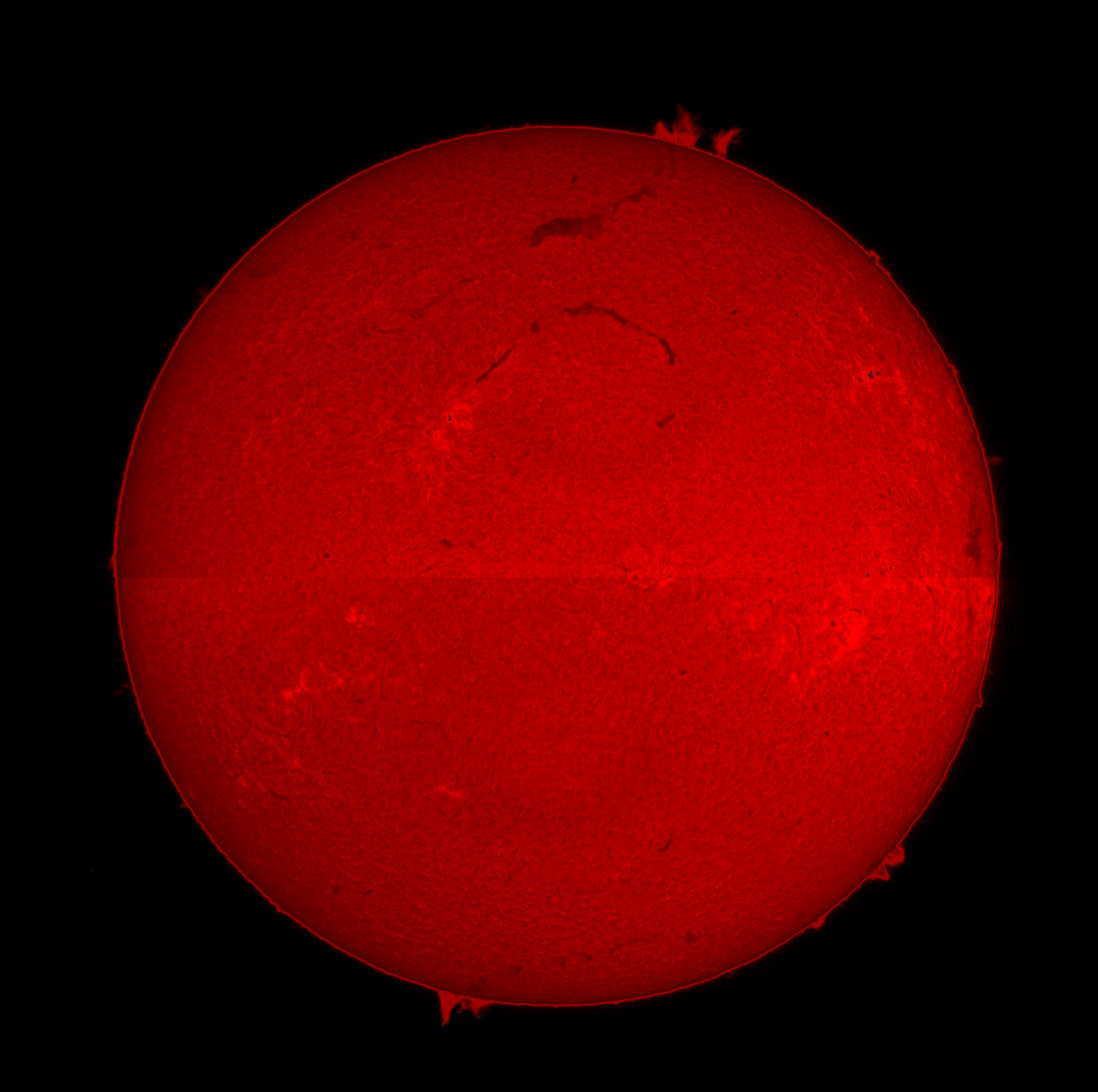
A two-picture mosaic of the full sun with prominences on-disk and on the limb.
A section of the image above, showing prominences on the limb (tongues reaching out against the black sky) and on the disk (grey long features). The prominences are large magnetic field structures that come out from the solar interior, and thin ionized and electrically conducting gas becomes trapped in these magnetic fields. The spicules are the "hairy", smaller and grainy features, and they are also magnetic field structures coming up from the surface. The motion of these are controlled by the conventitive flow patterns on and below the solar surface (granulation and supergranulation). These spicules are pencil shaped with a typical length in the range 5 - 20 000 km. The bright areas are regions with unusually strong magnetic fields, and the black small dots are small sunspots. The relatively thin Chromosphere is seen as the bright ring around the circumference (enhanced by image processing/non-linear brightness transformation). The Chromosphere is is about 2000 km thick, and the temperature here fluctuates roughly between 2000 and 15000 K, depending on waves propagating through the gas, and local magnetic fields. The overlying million-degree Corona is not visible in these images as it emits at shorter UV wavelengths into the X-ray region.
These prominences are comparable to, or larger than the Earth. They change on timescales of 30 min to a couple of hours, and the magnetic fields reconfigure in response to the convective, turbulent driving from below the surface.
The LUNT telesope with camera. A narrow wavelegth band in Hydrogen-alpha in transmitted through the telescope, which makes the Chromosphere visible.
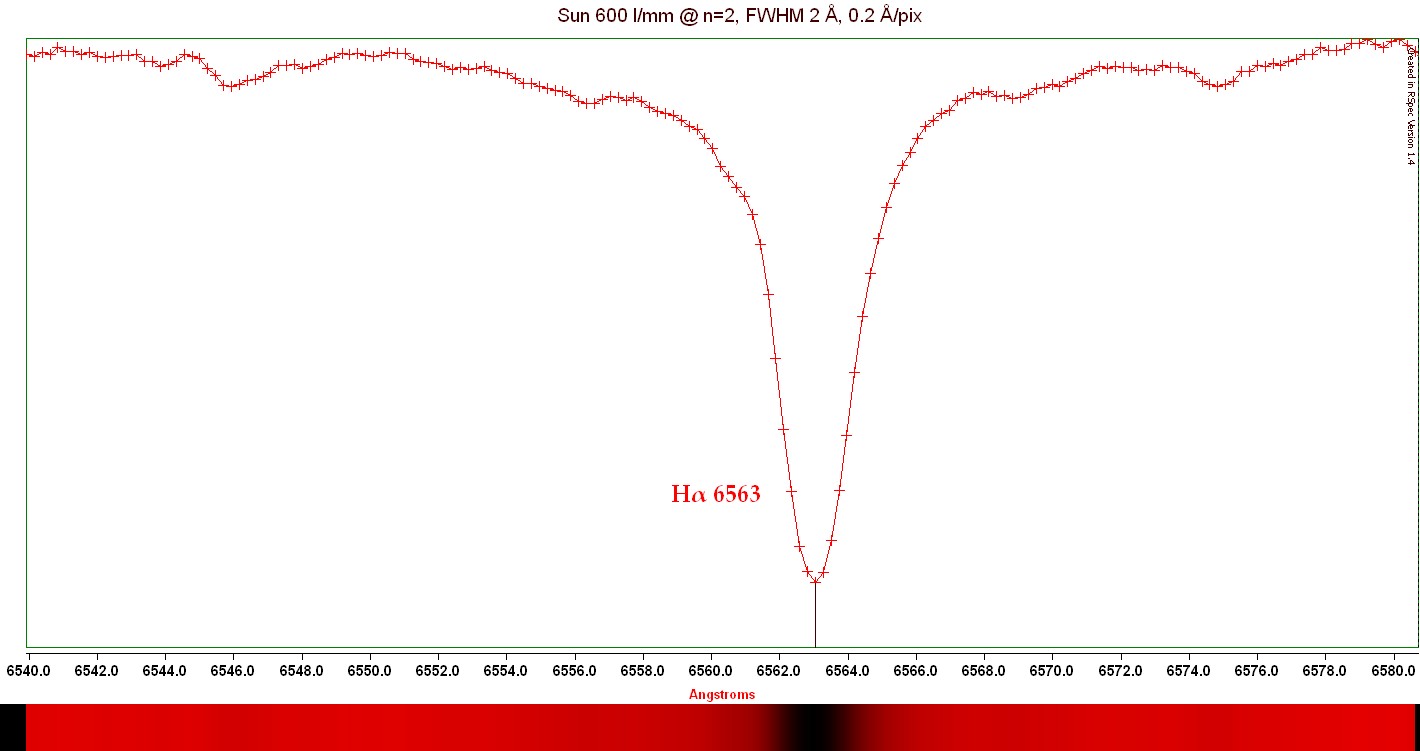
The Hydrogen alpha line recorded with the QCSPEC. The LUNT filter transmits only in a very narrow wavelength band near the core of the line. This band is adjustable, so that light from different heights in the solar atmosphere can be studied. The light in the core comes from higher layers (around 1000 km above the photosphere) than the light in the wings which comes from the photosphere (the surface layers above the turbulent interior).
Solar (disk averaged) spectra by letting the sunlight directly onto the slit (no telescope), and 1200 lines/mm grating, at the first order spectrum (n=1):
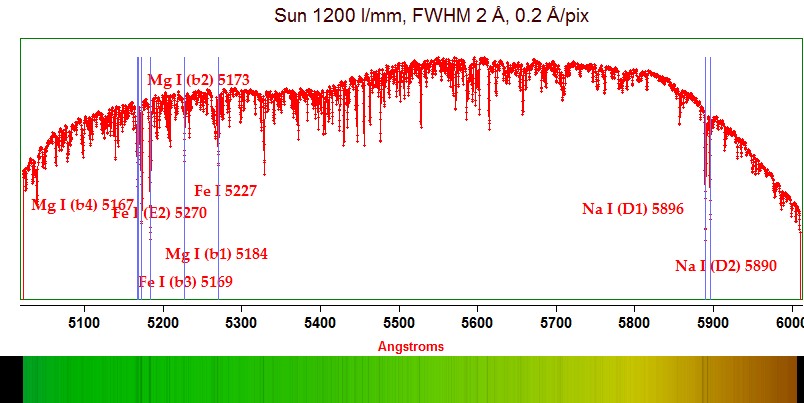 From the magnesium triplet to the sodium doublet. A spectral resolution of 2 Angstroms is obtained at n=1 with a samplig rate at 0.2 Angstroms per pixel. Canon 450D camera.
From the magnesium triplet to the sodium doublet. A spectral resolution of 2 Angstroms is obtained at n=1 with a samplig rate at 0.2 Angstroms per pixel. Canon 450D camera.
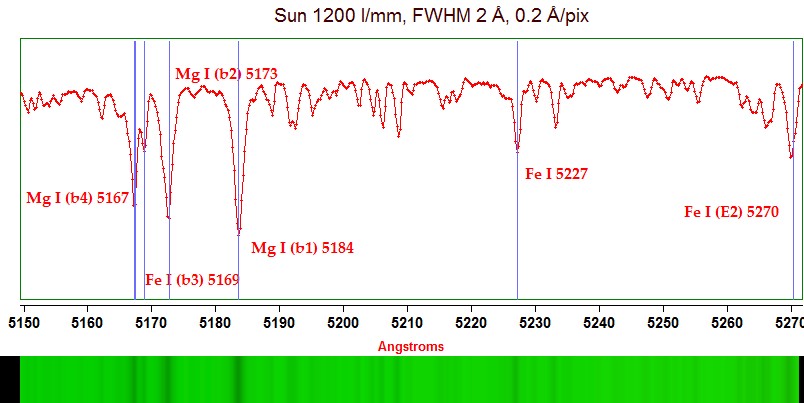 Zoomed near the Magnesium triplet.
Zoomed near the Magnesium triplet.
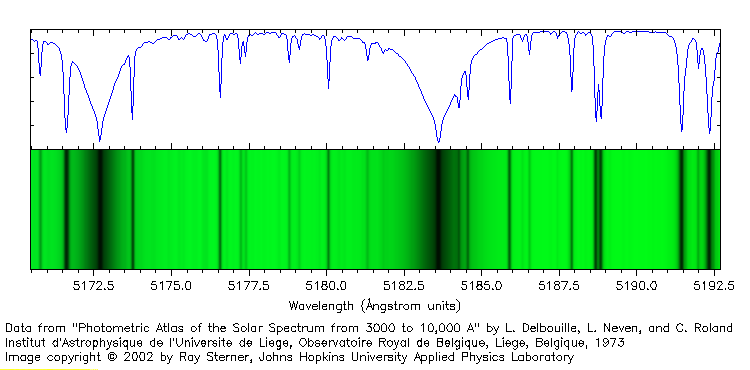 High resolution spectrum near two of the Magnesium lines, from the solar observatory in Liege.
High resolution spectrum near two of the Magnesium lines, from the solar observatory in Liege.
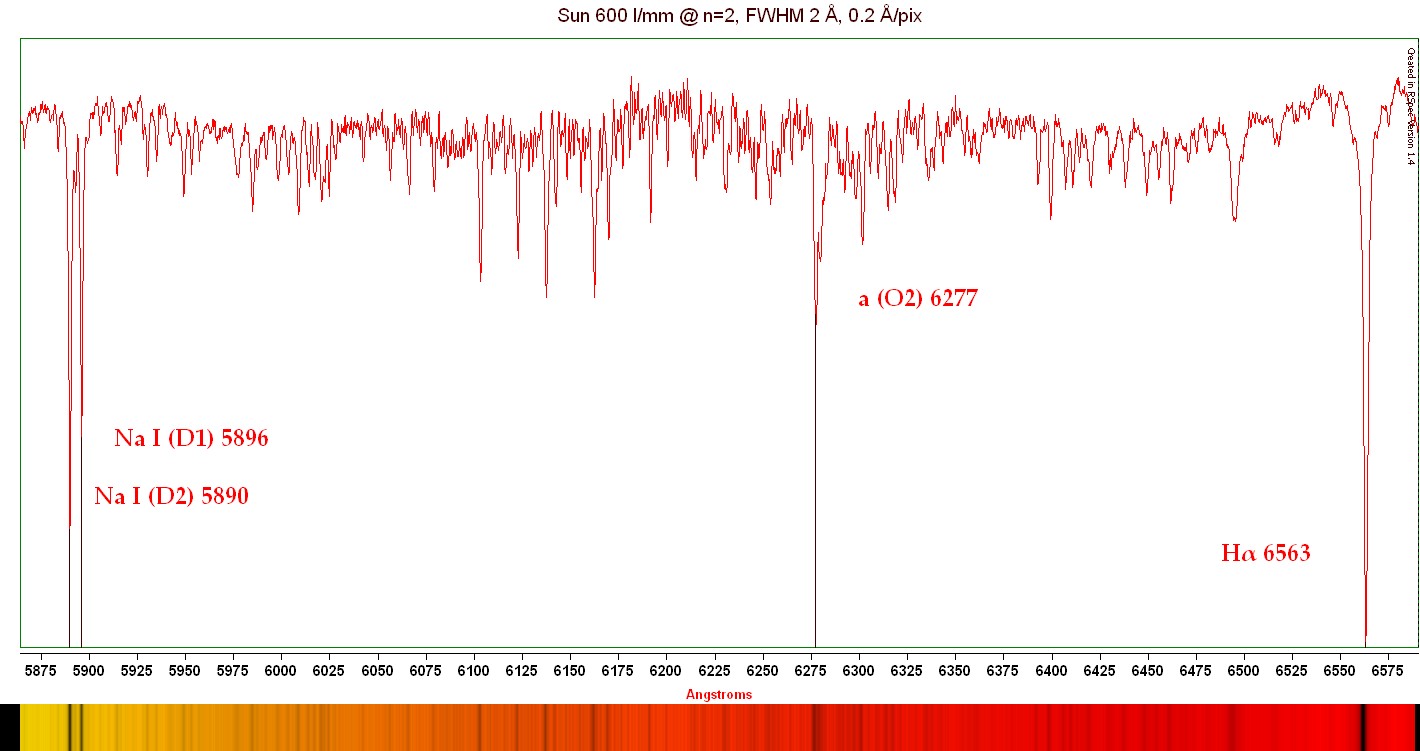 Solar spectrum from the Sodium doublet to the H-alpha line. A telluric O2 line is also marked. 600 l/mm reflective grating, narrow slit, and a Canon 450D camera. A spectral resolution of 2 Angstroms is obtained at n=2 with a samplig rate at 0.2 Angstroms per pixel.
Solar spectrum from the Sodium doublet to the H-alpha line. A telluric O2 line is also marked. 600 l/mm reflective grating, narrow slit, and a Canon 450D camera. A spectral resolution of 2 Angstroms is obtained at n=2 with a samplig rate at 0.2 Angstroms per pixel.
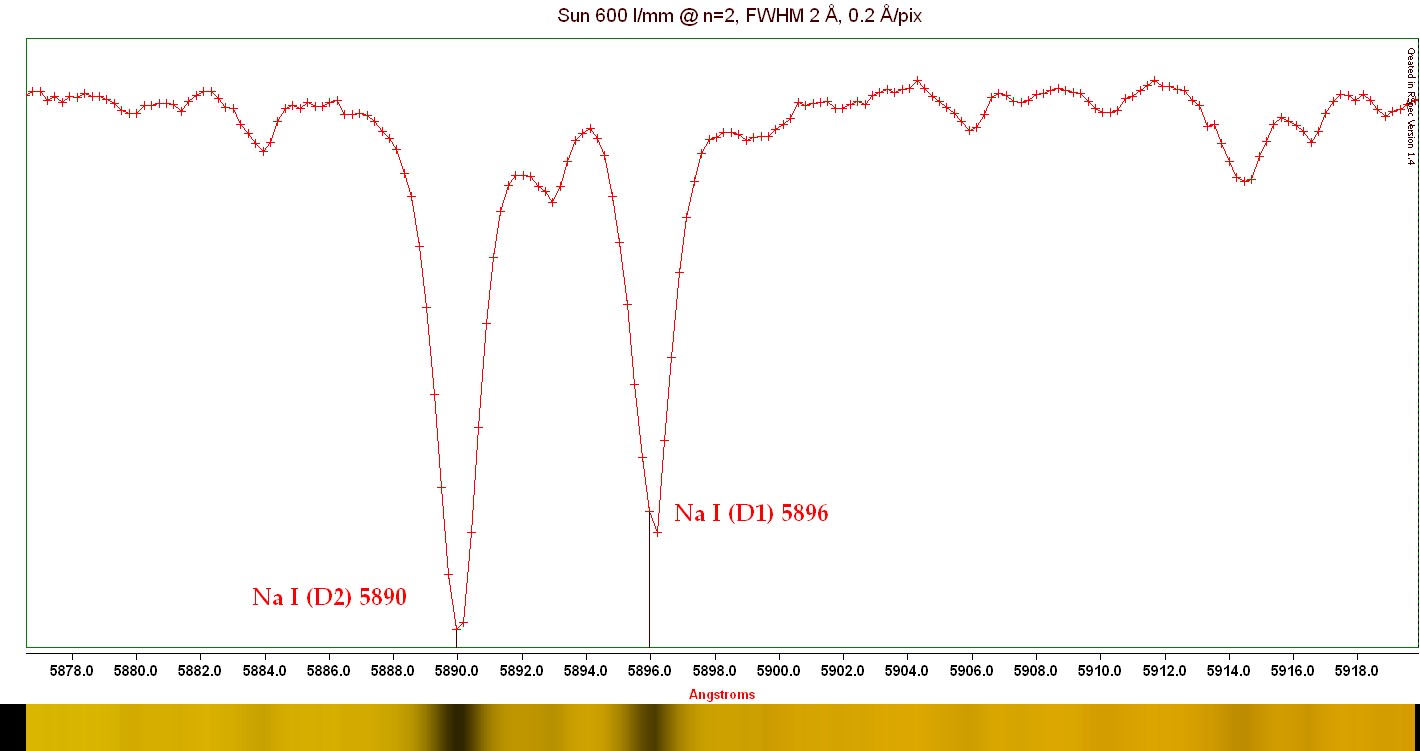 Sodium doublet, zoomed.
Sodium doublet, zoomed.
 High resolution spectrum near the Sodium doublet, from the solar observatory in Liege.
High resolution spectrum near the Sodium doublet, from the solar observatory in Liege.